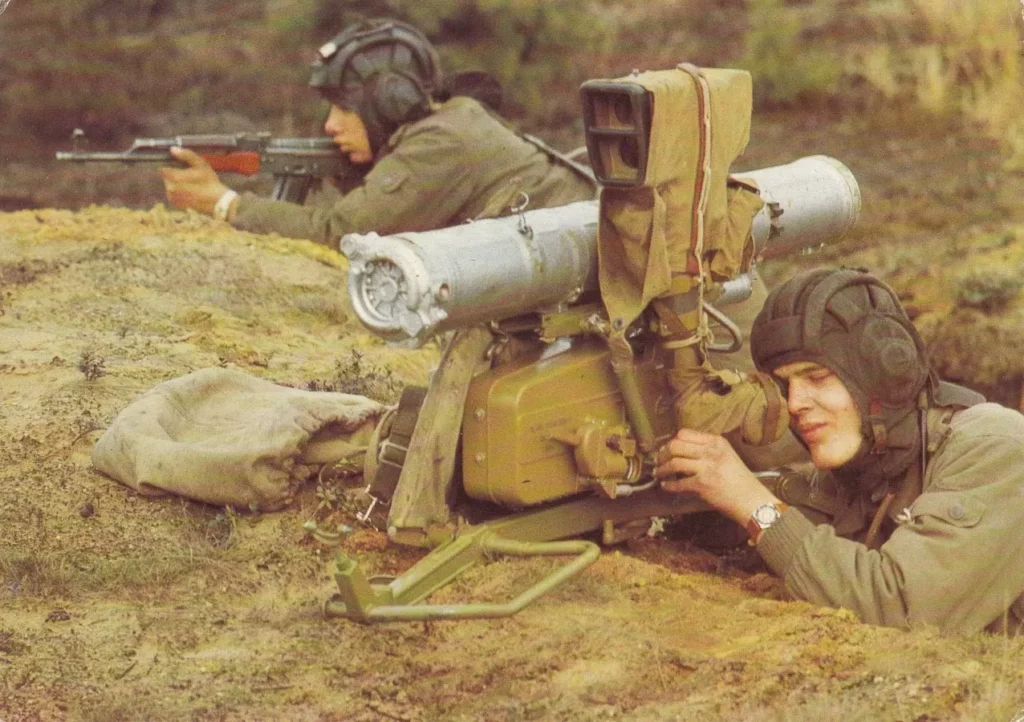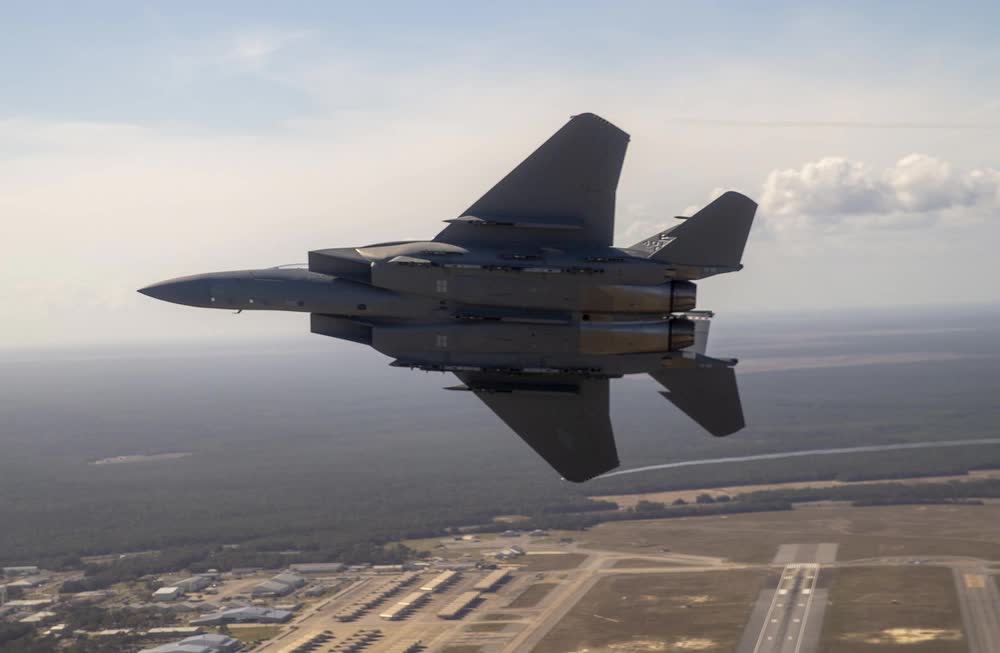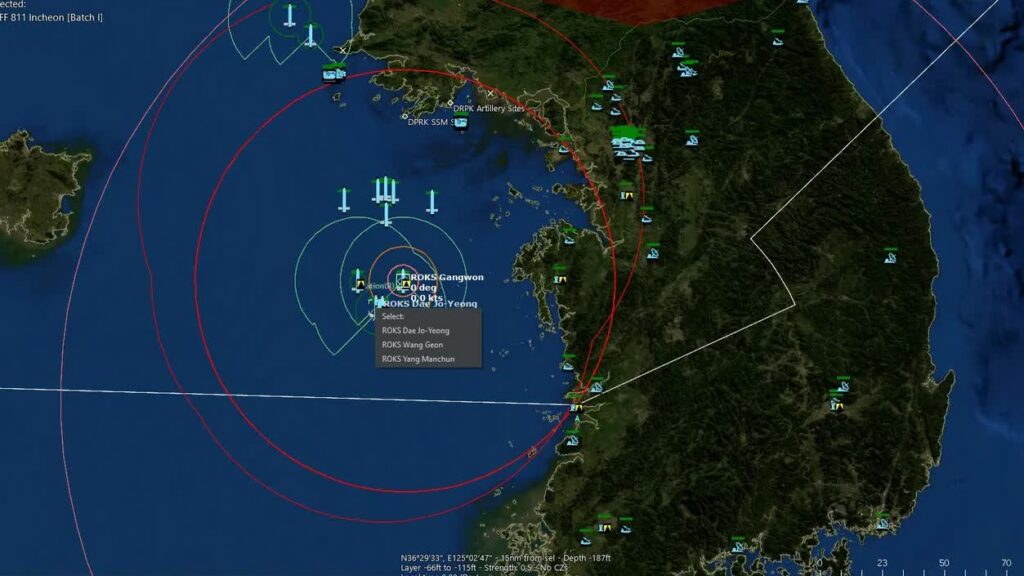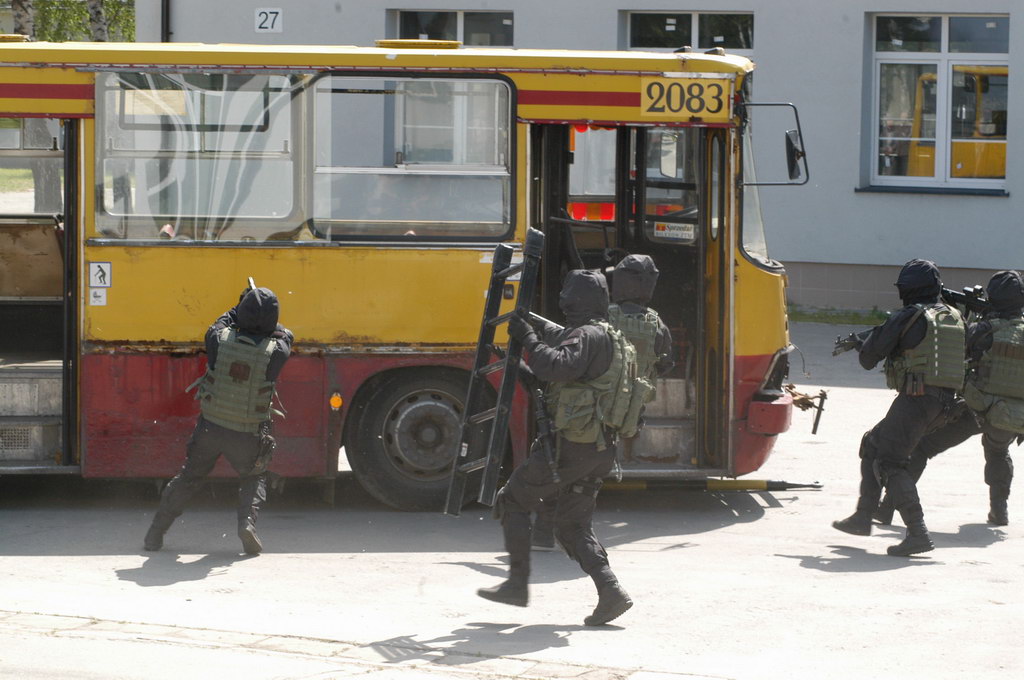Russia uses ‘relic’ weapons in Ukraine, including the 9K111 Fagot anti-tank system
- By George Hand
Share This Article

On the frontlines of the war in Ukraine, there are several pieces that many weapons experts might consider “relics” by modern standards. The war in Ukraine is a war of artillery and tanks; both sides strive to destroy as much of the enemy’s armor as possible. In this all-inclusive combat environment, either or both sides would want to tap into any and all resources to bring to bear to the tactical front.
Russia is engaging Ukraine with its oldest and newest anti-tank technology, and everything in between, including the early 9K111 Fagot wire-guided, anti-tank missile system.
The 9K111 Fagot was designed in 1962 and went into production in 1970, and therefore represents some of the earliest in missile wire-guided systems. It may be a bit of a surprise to learn that for a time, anti-tank missiles flew to their targets with one or more thin wires trailing behind them. These wires would be exchanging information between the missile and the gunner and apply corrections to the missile’s path. This early technology was called Optical Controlled to Line of Sight (OCLOS).

Finally, we have the exhausting military designation systems for intelligence reporting. It would be spring all year round if the planet could all decide on just one system for the designation of all pieces of military hardware: tanks, bombers, fighters, missiles, assault rifles… etc. But, every sovereign nation has its language, culture, and borders. That is to say, they have a different word for almost everything,
Which brings me to my final comments… at least some countries recognize the 9K111 anti-tank system by the name “Fagot,”
(Brief pause for inappropriate remarks.)
Related: How Ukrainian soldiers are using drones to fight Russians on the ground

However, NATO thwarts any would-be embarrassment by using the designation “AT-4 Spigot” to replace “9K111 Fagot.” What’s in a name — I still wouldn’t want to be on the receiving end of either one in my 2017 Ford Fusion. (And you know, I believe that “Fusion” is still available for use in the NATO designation system.) Coming from 1960s vintage, the 9K111 Fagot was just not subject to the modern onslaught available to harass the Pentagon’s computer random-select word choice system.
All in all, there is no longer today the opportunity for a battle report to show up to the battle board reading:
“Bravo company (mech) was attacked today at 1544hrs in Sector Dog Red, with the majority of its lead column routed by a bunch of Fagots.”
By Almighty God and with honor,
geo sends
Feature Image: A Cold War-era Soviet 9K111 Fagot. (Wikimedia Commons)
Read more from Sandboxx News
- The most intense fighting of the war is taking place in Bakhmut
- The CIA is looking for Russians who are ‘disgusted’ with the Ukraine war to recruit as spies
- Switchblade drones: Giving Ukraine an edge on the battlefield
- My experience with sleepwalking – Guilty as charged
- How Russia’s culture of lies is dooming Putin’s invasion of Ukraine
Related Posts
Sandboxx News Merch
-

‘AirPower’ Classic Hoodie
$46.00 – $48.00 Select options This product has multiple variants. The options may be chosen on the product page -

‘Sandboxx News’ Trucker Cap
$27.00 Select options This product has multiple variants. The options may be chosen on the product page -

‘Sandboxx News’ Dad Hat
$27.00 Select options This product has multiple variants. The options may be chosen on the product page
George Hand
Master Sergeant US Army (ret) from the 1st Special Forces Operational Detachment-Delta, The Delta Force. In service, he maintained a high level of proficiency in 6 foreign languages. Post military, George worked as a subcontracter for the U.S. Department of Energy (DOE) on the nuclear test site north of Las Vegas Nevada for 16 years. Currently, George works as an Intelligence Analyst and street operative in the fight against human trafficking. A master cabinet-grade woodworker and master photographer, George is a man of diverse interests and broad talents.
Related to: Military Affairs, Ukraine

Video: The wild plans to use the F-15EX in the early days of a war

The Air Force is letting troops play a video game to prepare for global conflict

Delta Force escapades with Poland’s elite GROM special operations unit

Ukraine is facing serious problems in the east, where Russia’s forces are grinding forward
Sandboxx News
-

‘Sandboxx News’ Trucker Cap
$27.00 Select options This product has multiple variants. The options may be chosen on the product page -

‘AirPower’ Classic Hoodie
$46.00 – $48.00 Select options This product has multiple variants. The options may be chosen on the product page -

‘AirPower’ Golf Rope Hat
$31.00 Select options This product has multiple variants. The options may be chosen on the product page -

‘Sandboxx News’ Dad Hat
$27.00 Select options This product has multiple variants. The options may be chosen on the product page
